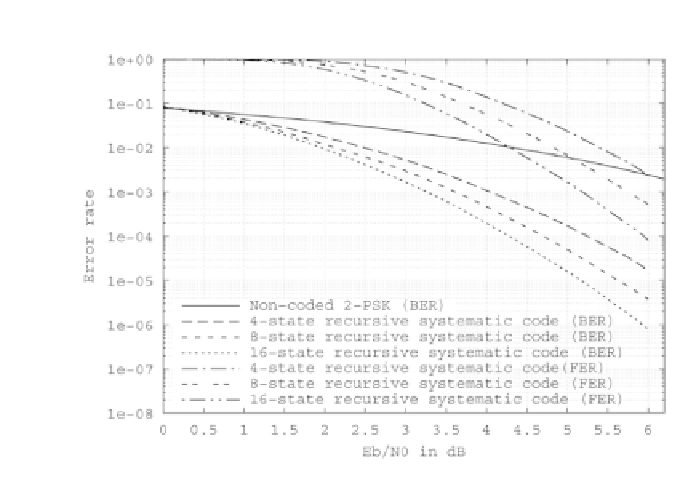Cryptography Reference
In-Depth Information
Figure 5.18 - Comparison of simulated performance of recursive systematic convolu-
tional codes with 4, 8 and 16 states after transmitting packets of 53 bytes on a Gaussian
channel (decoding according to the MAP algorithm)
probes was designed to process frames encoded with convolutional codes with
2 to 16384 states and rates much lower than
1
/
2
(16384 states and
R
=1
/
6
for the
Cassini
probe to Saturn and the
Mars Pathfinder
probe). Why not
use such codes for terrestrial radio-mobile transmissions for the general public?
Because the complexity of the decoding would become unacceptable for current
terrestrial transmissions using a reasonably-sized terminal operating in real time,
andfittingintoapocket.
5.4
Decoding convolutional codes
There exist several algorithms for decoding convolutional codes. The most fa-
mous is probably the Viterbi algorithm which relies on the trellis representation
of codes [5.14][5.8]. It enables us to find the most probable sequence of states
in the trellises from the received symbol sequence.
The original Viterbi algorithm performs
hard output
decoding, that is, it
provides a binary estimation of each of the symbols transmitted. It is therefore
not directly adapted to iterative systems that require information about the
trustworthiness
of the decisions. Adaptations of the Viterbi algorithm such
as those proposed in [5.2], [5.10] or [5.3] have led to versions with weighted
output called
Soft-Output Viterbi Algorithm
(SOVA). SOVA algorithms are not



